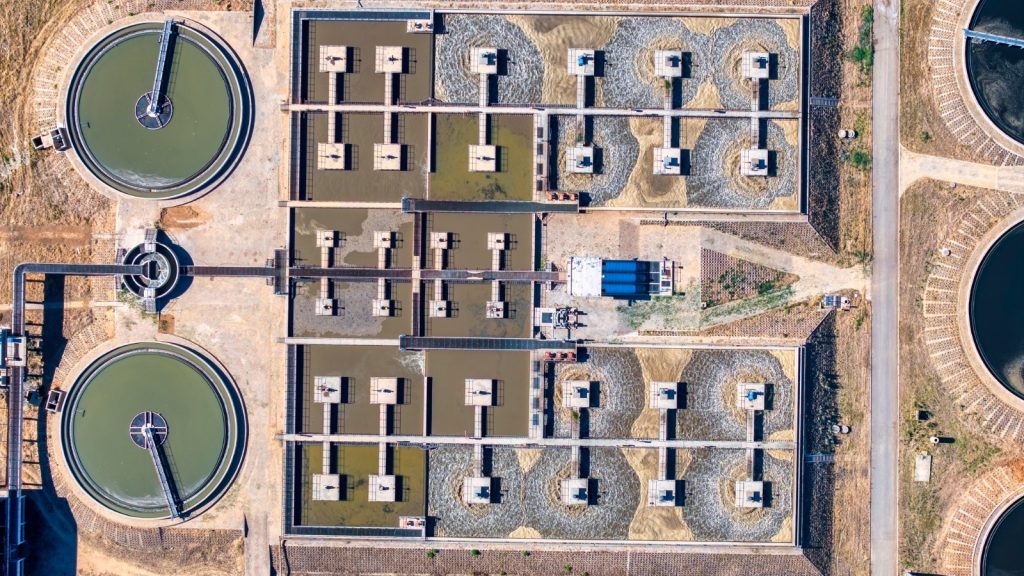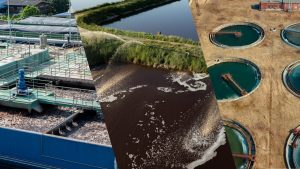If you think for a moment, can you guess how many aspects are there to be monitored when processing a building or an infrastructure in the realm of the wastewater industry? Just one small mistake will undoubtedly lead to millions of dollars in losses. This is why the Australian wastewater industry uses cutting-edge software models when monitoring the suitability of each aspect of a wastewater facility. A Building Management system, or BMS, is one such model that enters the construction scenario to fill the gaps in this procedure.
In this article, we are going to explore the implementation of BMS in the wastewater industry in Australia and the best benefits that you will receive through its robust application.
What is a Building Management System?

A BMS is an integrated computer-based control system that oversees and manages various mechanical, electrical, and environmental aspects within a building or facility.
It effectively monitors and manages a variety of systems, including security, fire alarms, lighting, and HVAC (heating, ventilation, and air conditioning). The latter employs sensors, controllers, and software to collect and evaluate data, then automatically modifies the building to maximise energy efficiency, comfort for tenants, and building performance.
However, its main goals are to ensure effective operation, improve safety, and offer a centralised platform for the monitoring, management, and optimisation of various building systems, which will eventually lead to better sustainability, cost savings, and functionality.
A BMS helps wastewater plants with powerful consolidated monitoring, energy optimisation, predictive maintenance, and accurate control over their treatment procedures. On the other hand, BMS technology clears the way for real-time modifications that are essential for efficient wastewater treatment operations while also increasing efficiency, lowering costs, and ensuring compliance with Australian laws and regulations.
Top 6 Applications of Building Management System in the Wastewater Industry
In the section below, we mainly focus on the major applications of the BMS model in the Australian wastewater arena.

Powerful Process Automation
Automation makes several treatment procedures, including filtration, aeration, and disinfection, more efficient with BMS. The latter precisely manages these activities by combining sensors and control systems, providing constant and excellent outcomes.
If put in simple terms, it regulates aeration levels based on demand and adjusts disinfection processes in real-time to meet standards. Also, it has the capacity to optimise filtration rates for efficient contaminant removal. This automation not only enhances process efficiency but also reduces human error while offering a high level of accuracy and reliability in wastewater treatment operations.
In the realm of wastewater, if you have implemented BMS-driven process automation, it will undoubtedly lead to improved treatment outcomes while minimising operational costs and ensuring sustained adherence to the toughest quality standards in Australia.
Regulatory Compliance
Australia is a country that puts the safety of its general public at the top of its priority list. This is why wastewater plants require the assistance of this technology. As it can continuously monitor key parameters such as pH levels, dissolved oxygen, turbidity, and chemical dosing rates, the BMS makes sure that the wastewater plants are keeping up with environmental regulations and standards without compromising their quality of service.
This technology makes sure that water quality standards are always fulfilled and prevents possible breaches by automatically modifying treatment operations in real time to satisfy requirements.
How exactly does this occur? With BMS’s smart technology, this is not as complicated as you think. Since it is integrated with sensors and control mechanisms, the BMS is powered to provide a proactive approach. If elaborated more deeply, it swiftly responds to fluctuations and variations within the wastewater treatment process, and its capability to swiftly adapt and fine-tune operations aids in avoiding some unwanted breaches as well.
Therefore, making sure the facility always runs within the legally set limitations makes it easier to protect the public’s safety and the health of the environment.
Predictive Maintenance
In the wastewater industry, a BMS is there to help with predictive maintenance efforts by combining data analytics and continuous monitoring. But why is it so necessary to have this benefit when it comes to the wastewater industry? That is because, due to the heavy infrastructure and expensive machinery this industry relies on, it should be on point if they need to receive the expected outcome while ensuring maximum ROI. On the other hand, unexpected downtime or malfunctioning can cost millions of dollars for a single machine failure. Who does not want to stay away from such a burden?
The brilliance of this technology lies in the hands of its capacity to collect and analyse data from various sensors and equipment, as the BMS identifies patterns and trends indicative of potential equipment failures or maintenance needs. It uses predictive algorithms to figure out when maintenance is needed, allowing proactive scheduling of replacements or repairs before problems worsen.
This is an excellent strategy that maximises the lifespan of vital equipment in the wastewater treatment plant and reduces downtime, all while avoiding expensive breakdowns. In the long run, the BMS-driven predictive maintenance solution significantly reduces total maintenance costs in wastewater treatment plants while ensuring uninterrupted operational background and improving equipment dependability.
Energy Management
Through the process of monitoring and assessing patterns of energy use across many systems, including filtration, aeration, and pumps, the BMS detects inefficiencies and employs techniques to minimise energy consumption while maintaining treatment efficiency.
Another best thing about this is its ability to optimise equipment scheduling by adjusting operation times and levels based on demand, which minimises energy waste during low-demand periods. The BMS also makes it possible to use energy-saving strategies like variable-speed drives, which improve motor efficiency while consuming less energy.
On the other hand, this powerful control and optimisation of energy usage clearly lowers operational costs and contributes to environmental sustainability by reducing the overall carbon footprint of wastewater treatment plants.
Remote Monitoring and Control
This system has the potential to consolidate data collection from various sensors and equipment, and this act allows operators to remotely access real-time information about crucial parameters like flow rates, chemical levels, and equipment status. With this comprehensive oversight, operators of the facility can swiftly detect anomalies and assess performance while making necessary adjustments or interventions from a remote location.
The BMS helps the wastewater authorities make wise decisions, backing up immediate responses to potential issues and ensuring continuous and efficient wastewater treatment. As it is powered by robust predictive capabilities, it helps to foresee maintenance needs or operational adjustments, which will lead to drastically minimising downtime and improving overall system reliability.
Resource Allocation and Optimisation
The right resource allocation at the right time is the key to the overall success of the wastewater facility, for sure. In that sense, BMS is highly valuable for optimal resource allocation and optimisation within the wastewater industry. As we mentioned above, BMS conveniently integrates data from various sensors and systems, and this screening ability empowers it to provide comprehensive insights into resource utilisation, including water, chemicals, and manpower.
This data-driven strategy analyses demand variations and consumption trends to enable the effective deployment of resources. Based on demand fluctuations and real-time data, operators can enhance resource utilisation by modifying process parameters, equipment operating schedules, and dosage rates.
With BMS in place, resource wastage will no longer be a problem as it provides suggestions to fit into the requirements without going beyond the necessary levels.
Ensuring Optimal Wastewater Production with BMS

Since you went through the whole article, you might understand how important it is to integrate BMS into your wastewater operations. However, in order to get the maximum outcome, you need to combine the BMS model with a software solution that is highly flexible with other systems. We would like to remind you of the importance of collaborating with a cutting-edge software brand to achieve optimal performance within your wastewater facility.







